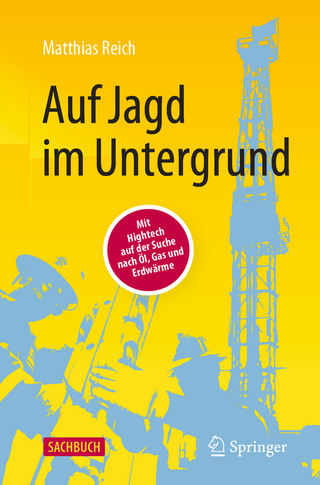
Upgrading Oilsands Bitumen and Heavy Oil
University of Alberta Press (CA) (Verlag)
978-1-77212-007-3 (ISBN)
- Titel wird leider nicht erscheinen
- Artikel merken
"The emphasis throughout is to link the fundamentals of the molecules through to the economic drivers for the industry, because this combination determines the technology used for processing."-From the Introduction The high demand for quality petroleum products necessitates ongoing innovation in the science and engineering underlying oilsands extraction and upgrading. Beginning with a thorough grounding in the composition, fluid properties, reaction behaviour, and economics of bitumen and heavy oil, Murray Gray then delves into current processing technologies, particularly those used at full commercial scale. The tables of data on composition, yield, and behaviour of oilsands bitumen and heavy oil fractions are extensive. Though the focus is on bitumen from Alberta's oilsands-the largest resource in the world-the science applies to upgrading of heavy oil and petroleum residue feeds worldwide. Upgrading Oilsands Bitumen and Heavy Oil lays out the current best practice for engineers and scientists in the oilsands and refining industries, government personnel, academics, and students.
Murray R. Gray was the founding Director of the Institute for Oil Sands Innovation at the University of Alberta in Edmonton. His research as a professor of chemical engineering specialized in processing of oil sands bitumen and heavy oil.
Acknowledgements xi
Introduction 1
I.1 Crude Oil and Bitumen Definitions 2
I.2 Canadian Oilsands Resources 2
I.3 International Bitumen and Heavy Oil Reserves 5
I.4 Upgrading Bitumen and Heavy Oil 6
I.5 Economic Incentives for Upgrading 7
I.6 Outline of This Book 10
References 11
1. Density and Phase Behaviour 13
1.1 Density and API Gravity 15
1.2 Distillation Curves and Boiling Ranges 17
1.3 Average Molar Mass and Molar Mass Distribution 24
1.4 Vapour-Liquid Equilibrium 30
1.5 Solids in Crude and Processed Oils 41
1.6 Density and Average Molar Mass of Asphaltenes 46
1.7 Solubility Parameters of the Petroleum, Bitumen and Asphaltene Fractions 47
1.8 Water in Hydrocarbons 61
Abbreviations 65
Notation 65
References 67
2. Transport and Thermal Properties 71
2.1 Liquid Viscosity 72
2.2 Thermal Conductivity 78
2.3 Diffusion Coefficient 79
2.4 Surface Tension 80
2.5 Melting Point of Vacuum Residues and Asphaltenes 82
2.6 Thermal Properties of Bitumen Fractions 84
2.7 Heats of Combustion 87
Notation 87
References 89
3. Chemical Composition 91
3.1 Origins of Alberta Bitumens 93
3.2 Elemental Composition 93
3.3 Class Fractionation 99
3.4 Coke-Forming Tendency 104
3.5 Chemical Structures in Bitumen 107
3.6 Asphaltene Composition and Structure 121
3.7 Quality Issues with Bitumen, Heavy Oils and Oilsands Products 139
Abbreviations 142
References 142
4. Upgrading Reactions and Kinetics 149
4.1 Thermodynamics of Cracking 151
4.2 Mechanisms of Cracking Hydrocarbons 153
4.3 Overall Kinetics of Bitumen Cracking 171
4.4 Liquid- versus Vapour-Phase Cracking of Bitumen Components 178
4.5 Catalytic Reactions in Upgrading 180
4.6 Formation of Solids and Coke 190
4.7 Basic Equations for Reactor Analysis at Steady State 199
Abbreviations 202
Notation 202
References 204
5. Marketing of Bitumen Products 209
5.1 Crude Oil Exports 210
5.2 Crude Oil Pricing 211
5.3 Transportation of Bitumen and Upgraded Products 215
5.4 Trade-Offs Between Upgrading Cost and Product Quality 221
5.5 Natural Gas Supply and Properties 224
5.6 Natural Gas Condensate 228
5.7 Sulfur Transport and Marketing 228
References 229
6. Production of Bitumen and Heavy Oil 231
6.1 Mineable Oilsands 232
6.2 In Situ Production of Oilsands Bitumen 238
6.3 Improvements to In Situ Production 241
6.4 In Situ Upgrading Schemes 242
References 245
7. Overview of Upgrading Processing and Economics 247
7.1 Sequences of Upgrading Processes 248
7.2 Operating Costs of Upgrading Bitumen and Heavy Oil 256
7.3 Benchmarking of Production and Upgrading Strategies 259
7.4 Greenhouse Gas Emissions from Production and Upgrading Processes 262
7.5 Selection of a Primary Upgrading Technology 263
7.6 Relationships of Upgrading to Refining 266
7.7 Limits to Upgrading Heavy Oils and Bitumens 270
References 272
8. Separation Processes 275
8.1 Desalting 276
8.2 Atmospheric and Vacuum Distillation 282
8.3 Solvent Deasphalting 283
References 294
9. Thermal Cracking and Coking Processes 295
9.1 Visbreaking: Thermal Viscosity Reduction 296
9.2 Delayed Coking 305
9.3 Fluid Coking 312
9.4 Fluid Coking with Coke Gasification 315
9.5 Limits on Yield and Density for Coking and Thermal Cracking Products 316
9.6 Coke Yield and Composition 319
9.7 Recycle in Coking Processes 322
9.8 Liquid-Phase Mass Transfer in Coking Processes 326
9.9 Additives to Control Coke Yield 329
9.10 Development of New Coking Processes 330
9.11 Control of Sulfur Emissions from Coking Processes 336
9.12 Kinetic Modelling of Thermal Cracking and Coking Processes 336
9.13 Heat of Reaction of Visbreaking and Coking 344
Notation 345
References 346
10. Residue Hydroconversion Processes 351
10.1 Fixed-Bed Catalytic Processes 353
10.2 Catalytic Ebullated-Bed Processes: LC-Fining and H-Oil 356
10.3 Additive-Based Processes: Slurries, Suspensions and Solutions 367
10.4 Roles of Hydrogen and Catalysts in Suppressing Coke Formation 374
10.5 Limits to the Performance of Hydroconversion Processes 377
10.6 Hydrogenation Reactions During Hydroconversion 379
10.7 Heat of Reaction for Hydroconversion 384
10.8 Catalyst Deactivation in Hydroconversion 385
10.9 Kinetic Models of Hydroconversion 397
Notation 401
References 402
11. Hydrotreating Processes 405
11.1 Hydrotreating of Distillate Fractions 406
11.2 Conversion of Diolefins 411
11.3 Hydrotreating for Aromatics Saturation 412
11.4 Hydrocracking of Gas Oils 416
11.5 Hydrogenation Reactions During Hydrotreating 417
11.6 Stoichiometry of Catalytic Hydrogenation 424
11.7 Heats of Reaction of Hydrotreating Reactions 425
11.8 Catalyst Properties 425
11.9 Catalyst Deactivation 430
Notation 437
References 438
12. Hydrogen Production and Gas Purification Processes 441
12.1 Hydrogen Production Processes 442
12.2 Cost of Hydrogen Production 447
12.3 Purification of Hydrogen-Rich Process Streams 448
12.4 Gas Recovery 449
12.5 Amine Treating 450
12.6 Sulfur Removal 452
References 457
Appendix A: Glossary and List of Acronyms 459
A.1 Glossary of Selected Terms Commonly Used in the
Oilsands Industry 459
A.2 Common Acronyms in the Oilsands Industry 470
References 470
Appendix B: Assay Data for Bitumen and Upgraded Products 471
Index 479
| Verlagsort | Alberta |
|---|---|
| Sprache | englisch |
| Maße | 203 x 254 mm |
| Gewicht | 730 g |
| Themenwelt | Naturwissenschaften ► Geowissenschaften ► Geologie |
| Technik ► Elektrotechnik / Energietechnik | |
| ISBN-10 | 1-77212-007-3 / 1772120073 |
| ISBN-13 | 978-1-77212-007-3 / 9781772120073 |
| Zustand | Neuware |
| Haben Sie eine Frage zum Produkt? |
aus dem Bereich


